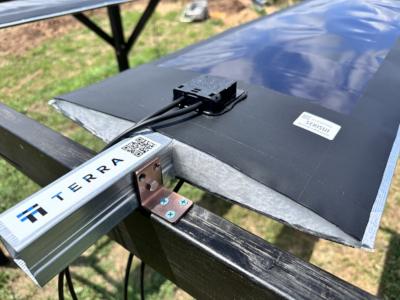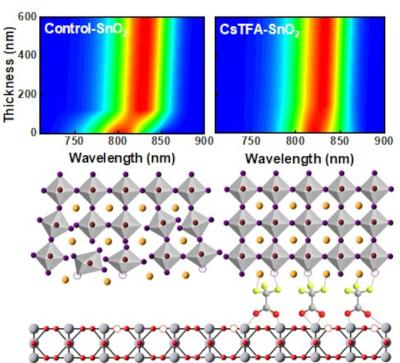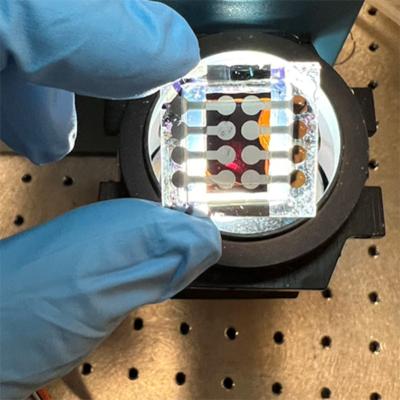Novel light management technique yields perovskite solar cells with improved efficiency and stability
Researchers at the Nova University of Lisbon, University of Aveiro and University of York have created an ultra-thin perovskite solar cell with a checkerboard tile pattern that shields the perovskite layer from UV degradation. The design includes a luminescent down-shifting encapsulant, which enhances UV photon conversion and boosts overall efficiency.
The team provided background for this work, stating that advanced light management techniques can enhance the sunlight absorption of perovskite solar cells (PSCs). When located at the front, they may act as a UV barrier, which is paramount for protecting the perovskite layer against UV-enabled degradation. Although it was recently shown that photonic structures such as Escher-like patterns could approach the theoretical Lambertian-limit of light trapping, it remains challenging to also implement UV protection properties for these diffractive structures while maintaining broadband absorption gains.










